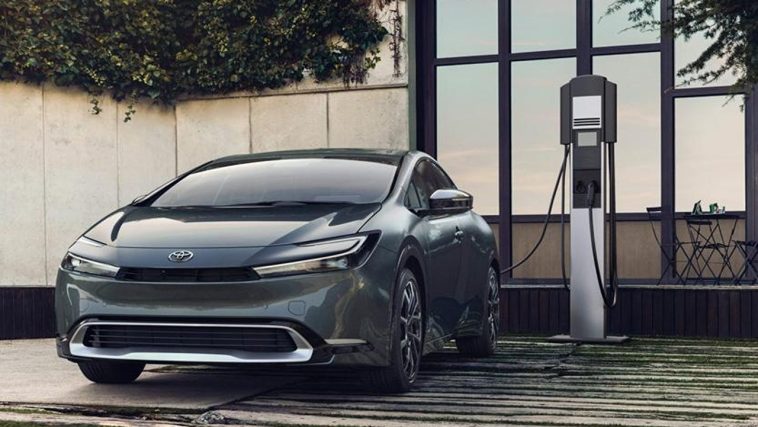LISTEN HERE:
While many major car manufacturers rushed headlong into the electric vehicle (EV) market to mixed results, the Japanese automaker, Toyota, adopted a more conservative approach. A focus on hybrids over full electric vehicles, saw them weather what other companies are increasingly recognizing as a tumultuous entry into the EV sector.
Following the trepidation of the previous CEO, Akio Toyoda, who eloquently conveyed that transition to EVs would take ‘longer than media anticipates,’ the company is now poised to reap the financial benefits. Striking a careful balance between innovation and consumer acceptance, Toyota’s strategy seems to be paying off, despite the contradictory environmental narratives.
Toyota has reported impressive statistics for 2023, riding a wave of strong hybrid vehicle sales. This sustained strategy is projected to yield over $30 billion in net profits for the fiscal year concluding in March. Over time, Toyota’s resolve has been bolstered by the struggles of its competitors, some of whom are dealing with substantial losses on their EV product lines. This suggests that Toyota’s conservative approach may be more in line with market realities than the strategies adopted by other manufacturers.
The company has exhibited a remarkable 6.6% uptick in sales for 2023, compared to the previous year. According to data from InsideEVs, this success can be attributed in part to its hybrid models. In the U.S., Toyota’s sales include nearly 15,000 pure EVs, 40,000 plug-in hybrids, and over 600,000 non-rechargeable hybrids. These figures testify to the consumer acceptance of Toyota’s balanced portfolio of products.
Meanwhile, the Biden Administration has been prioritizing EV market growth, setting an ambitious target that new EV sales should constitute 50% of total new vehicle sales by 2030. Further proposed EPA emissions standards could see this rise to requiring two-thirds of all new light-duty vehicles to be electric post-2032 model. Regardless, the market appears apprehensive, a truth palpably reflected in slower-than-expected consumer demand increases and EV inventory buildups.
Automotive market expert Mark Mills, a Distinguished Senior Fellow at the Texas Public Policy Foundation, suggested that diversity is essential in the automotive landscape. He explained that there is no universal solution for consumers; different needs and circumstances require distinct options. This echoes Toyota’s standpoint, which is more aligned with providing customers flexible mobility solutions.
Another significant industry player, Ford, has notably struggled while attempting to champion the EV market. The company initially planned to manufacture 300,000 EVs annually by 2023, aiming further to produce 2 million per year by 2026. However, both these ambitious goals were either delayed or missed entirely.
Further compounding Ford’s struggles, it reportedly lost an alarming $65,000 on each EV sold in 2023. A leaked summary of the company’s financial performance revealed a sweeping $4.7 billion loss overall on its EV products for that year. Based on these figures, Ford is projected to suffer losses between $5 billion and $5.5 billion in the coming year on its EV product line, in stark contrast to a net profit of $4.3 billion in 2023. This disparity may prompt Ford to reconsider its electric strategy, potentially emulating Toyota and pivoting more substantially towards hybrid models.
Marlo Lewis, a senior fellow for the Competitive Enterprise Institute, has attributed Toyota’s advantageous position to its consumer-focused strategy. Specifically, the company’s offerings appeal to those desiring affordable, fuel-efficient vehicles that do not necessarily require extensive charging facilities. Toyota’s emphasis on these concerns has apparently resonated well with the untapped market, leading to impressive sales and profits.
Interestingly, Toyota was not an early adopter of EVs, deciding to market all-electric products only from 2020 onwards, lagging behind competing companies. Despite this supposedly late entry, the company managed to establish a substantial presence in the market, underscoring the viability of its more cautious strategy.
Other American car manufacturers, such as General Motors, have also experienced difficulties with their rapid EV adoptation plans. The largest U.S. automaker recently decided to revise down its goal to manufacture 400,000 EVs by mid-year. It didn’t meet its 2023 EV production goal and now anticipates EVs might begin to generate profits only by 2025.
A vibrant example of industry diversification comes from Stellantis, the third major American manufacturer. The company is planning to introduce its inaugural EVs to the U.S. market in the first quarter of 2024. It’s yet another sign that despite policy pressure towards EV adoption, automakers continue to apply unique strategies adapted to their perception of market conditions and consumer needs.
Diana Furchtgott-Roth, Director of the Center for Energy at the Heritage Foundation, lauded Toyota’s prudent transition to clean energy. She noted that the slow uptake of EVs by American consumers seemingly vindicates Toyota’s measured approach. A Pew Research Poll from July 2023 supports the claim, as it found apathy towards EVs among half of all Americans, with only 38% somewhat interested in purchasing an EV as their next vehicle.
So, while proactive policies are in place to encourage EV adoption, traditional manufacturers like Ford and General Motors are encountering massive losses on their EVs. This could suggest that the accelerated pace at which the government seeks to move may not align with consumer demand or market realities. Faced with these challenges, both Toyota and its counterparts indicate a clear trend towards balance and pragmatism in the pursuit of sustainable mobility.
More Articles: Real News Now


